 W
WAllobates insperatus is a species of frog in the family Aromobatidae. It is endemic to Amazonian slopes of eastern Ecuador; its range, however, extends to near the Colombian border and it may occur in that country too. It inhabits leaf-litter in forest. It breeds in bracts of palms on the ground and other small, ephemeral pools. Its habitat is threatened by agriculture, logging, and oil exploration.
 W
WAlopoglossus viridiceps, known commonly as the green-headed shade lizard, is a species of lizard in the family Alopoglossidae. The species is endemic to Ecuador.
 W
WThe Andean caenolestid, also known as the Andean shrew opossum or Condor caenolestid, is a shrew opossum known only from Cordillera del Cóndor (Ecuador), its type locality. It was first described by zoologists Bruce D. Patterson and Albuja V. Luis in 1996. It is the largest caenolestid. The IUCN classifies it as vulnerable. As of 2015, the population is estimated at less than 1,000.
 W
WThe Andean marsupial tree frog, also known as the Riobamba marsupial frog or Riobamba pouched frog, is a species of frog in the family Hemiphractidae. It is endemic to Ecuador. The species is confined to the Andes and the inter-Andean valleys, from Imbabura south to Chimborazo. They live in an altitude of 2,200-3,500 meters above sea-level. The Andean marsupial tree frog's habitat varies from the montane forests to the dry rocky hillsides, and from the agave plants to the corn fields. Once a common species, it is threatened by severe habitat loss.
 W
WAnolis podocarpus is a species of anole lizard in the family Dactyloidae. It was first described by Fernando P. Ayala-Varela and Omar Torres-Carvajal in 2010, the type locality being the Podocarpus National Park at Romerillos Alto in Zamora-Chinchipe Province, Ecuador on the southeastern slopes of the Andes. The specific name refers to the Podocarpus trees which are found in the Park.
 W
WAnolis proboscis, commonly known as the Proboscis anole, Ecuadorian horned anole or Pinocchio lizard, is a small anole lizard belonging to the family Dactyloidae. A single male specimen was discovered in 1953 in Ecuador and formally described by Peters and Orces in 1956, but the species then went unreported until its rediscovery in 2004. Its currently known habitat is a small stretch of vegetation along an Ecuadorian highway. It has been classified as Endangered by the IUCN due to its restricted distribution and ongoing habitat loss.
 W
WAtelopus balios, the Rio Pescado stubfoot toad, is a species of toad in the family Bufonidae. It is endemic to southwestern Ecuador, with records from Pacific lowlands in Azuay, Cañar, and Guayas Provinces. It is a rare species that was already suspected to be extinct, but a single specimen was discovered in 2011 by a team from Conservation International during a hunt for missing amphibians. The decline in amphibian populations is well documented. The Atelopus balios is Critically Endangered as a result of the widespread amphibian Chytridiomycosis fungus that has decimated other amphibian populations. There are only 10 known findings of the tadpole, Atelopus balios.
 W
WAtelopus exiguus is a species of toad in the family Bufonidae. It is endemic to Ecuador and only known from the area of its type locality in the Azuay Province of southern Ecuador, in the sub-páramo and páramo of Cordillera Occidental. Common name Mazán jambato frog has been proposed for it.
 W
WAtelopus ignescens, the Jambato toad or Quito stubfoot toad, is a species of toad in the family Bufonidae. It is endemic to the northern Andes of Ecuador. This once abundant species was believed to be extinct until its rediscovery in 2016. The specific name ignescens means "to catch fire", presumably in reference to the orange ventral color of this species.
 W
WAtelopus longirostris is a species of harlequin frog, a member of the family of true toads (Bufonidae). It has been recorded only in northern Ecuador. Records from Colombia probably represent different species. As of mid-2017, it is listed as extinct by the IUCN, but was rediscovered in 2016 after more than two decade with no sightings. The scientific name of this species means "long-snout" and the species has been named in Spanish as the jambato hocicudo. Common names longnose stubfoot toad, scrawny stubfoot-toad, and longnose sharlequin frog have been coined for it.
 W
WAtelopus nanay is a species of toads in the family Bufonidae.
 W
WAtelopus onorei is a small species of bright yellow and green toads in the family Bufonidae. It is endemic to Ecuador and is only known from the vicinity of its type locality on the western slope of the Cordillera Occidental in the Azuay Province. It has not been seen since 1990 and may now be extinct, but it is possible that overlooked populations remain.
 W
WAtelopus palmatus is a species of toad in the family Bufonidae. It is endemic to the Cordillera Oriental of eastern Ecuador and is known from the Napo and Pastaza Provinces at elevations of 1,150–1,740 m (3,770–5,710 ft) above sea level. Its type locality is "Rio Pastaza".
 W
WAtelopus petersi is a species of toads in the family Bufonidae. It is endemic to Ecuador and is known from the Cordillera Oriental in the Napo Province and more provisionally, in the Chimborazo Province. The specific name petersi honors James A. Peters, an American zoologist who collected the first specimens of this species in 1962 and provided a description under the name Atelopus pachydermus. Common names Peters' stubfoot toad and Peters' jambato toad have been coined for it.
 W
WAvicularia purpurea, also called purple tree tarantula, Ecuadorian purple tarantula or Ecuador purple pinktoe, is a species of spider belonging to the family Theraphosidae (tarantulas).
 W
WThe Colombian weasel, also known as Don Felipe's weasel, is a very rare species of weasel only known with certainty from the departments of Huila and Cauca in Colombia and nearby northern Ecuador. Both its scientific and alternative common name honours the mammalogist Philip "Don Felipe" Hershkovitz.
 W
WPristimantis crucifer is a species of frog in the family Craugastoridae. It is endemic to Ecuador. Its natural habitats are tropical moist montane forests and rivers. It is threatened by habitat loss.
 W
WEngystomops coloradorum, also known as Colorado dwarf frog, is a species of frogs in the family Leptodactylidae. It is endemic to the Pacific lowlands and foothills of the Andes in the Pichincha and Santo Domingo de los Tsáchilas Provinces, Ecuador.
 W
WEngystomops montubio is a species of frog in the family Leptodactylidae. It is endemic to western Ecuador. It inhabits lowland evergreen and semi-deciduous forest and lowland dry shrub. It also inhabits open man-made habitats, such as pastures, near buildings, etc. Breeding takes place in pools during the rainy season.
 W
WEnyalioides altotambo is a species of lizards in the genus Enyalioides, from the tropical northwestern Andes in Ecuador. It differs from its cogenerate species by possessing smooth and homogeneous (size) dorsal scales, a brown iris, and lacking circular and keeled scales on its flanks.
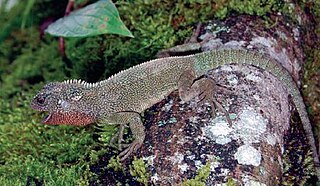 W
WThe red-throated wood lizard is a species of reptile in the genus Enyalioides, native to Ecuador.
 W
WThe equatorial dog-faced bat is a species of bat in the family Molossidae. It is endemic to Ecuador. They are found in dry, tropical forests. The species is now endangered. The equatorial dog-faced bat feeds on insects.
 W
WThe sailfin grouper, also known as the bacalao grouper, colorado grouper or yellow grouper, is a species of marine ray-finned fish, a grouper from the subfamily Epinephelinae which is part of the family Serranidae, which also includes the anthias and sea basses. It is found off islands in the eastern Pacific.
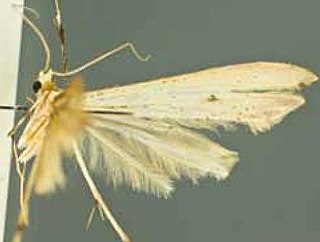 W
WHellinsia orellanai is a moth of the family Pterophoridae that is endemic to Ecuador.
 W
WHyloscirtus hillisi is a species of tree frog native to the Cordillera del Cóndor in Ecuador at elevations of 6,532 to 7,001 feet. The species is in danger of extinction.
 W
WHyloscirtus tapichalaca is a species of frog in the family Hylidae. It is endemic to Ecuador and only known from the vicinity of its type locality in the Tapichalaca Biological Reserve, Zamora-Chinchipe Province. It is named after the type locality, which is a reserve owned by the Fundación de Conservación Jocotoco. Hyloscirtus tapichalaca belongs to the Hyloscirtus larinopygion group, although its placement with the group is uncertain; it may be the sister taxon of all other species in the group.
 W
WHyloxalus anthracinus is a species of frog in the family Dendrobatidae. It is endemic to Ecuador and occurs on the Cordillera Oriental and in the Mazán River, southern Ecuador. The name anthracinus means "coal black" and refers to the black dorsum of males.
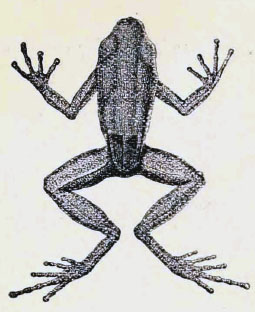 W
WHyloxalus whymperi, sometimes known as the Tanti rocket frog, is a species of frog in the family Dendrobatidae. It is endemic to west-central Ecuador and only known from Tanti and near San Francisco de Las Pampas, Pichincha Province. It is a poorly known species.
 W
WIsorineloricaria spinosissima, also known as the zucchini catfish, is a species of Loricariidae endemic to the Guayas River basin in western Ecuador. This species grows to a length of 56.5 centimetres (22.2 in) TL.
 W
WLagidium ahuacaense is a rodent in the mountain viscacha genus (Lagidium) that occurs in southern Ecuador. First observed in 2005 and formally described in 2009, it occurs more than 500 km (310 mi) north of the nearest previously known population of mountain viscachas in central Peru. Only a single population is known, found on rocky habitats on Cerro El Ahuaca, an isolated granite mountain in southern Ecuador, and as few as several dozen individuals remain. The species is threatened by fires and grazing cattle, and the discoverers recommended its conservation status be assessed as critically endangered.
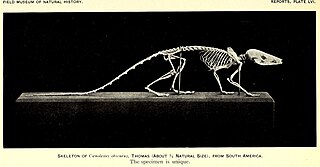 W
WThe northern caenolestid, also known as the blackish shrew opossum, is a shrew opossum found in Colombia and Ecuador. It is listed as Vulnerable by the IUCN.
 W
WNymphargus anomalus is a species of frog in the family Centrolenidae. It is endemic to Ecuador and occurs on the Amazonian slopes of the Ecuadorian Andes in the Napo Province. Common name Napo Cochran frog has been coined for it.
 W
WOrcés’s long-tongued bat is a species of leaf-nosed bat found in Ecuador.
 W
WOsornophryne antisana, the Napo plump toad, is a species of toad in the family Bufonidae. It is endemic to Ecuador. Its natural habitats are subtropical or tropical moist montane forests, subtropical or tropical high-altitude shrubland, and subtropical or tropical high-altitude grassland. It is threatened by habitat loss.
 W
WOsornophryne sumacoensis is a species of toad in the family Bufonidae. It is endemic to the Ecuador and only found in the forests surrounding a small crater lake on the eastern slopes of Sumaco, a volcano in the Napo Province.
 W
WPachygonidia odile is a moth of the family Sphingidae which is endemic to Ecuador.
 W
WThe phantasmal poison frog or phantasmal poison-arrow frog is a species of poison dart frog. It is endemic to Ecuador and known from the Andean slopes of the central Ecuador in Bolívar Province. They have radiant colors. This species is endangered, and there are only a few locations in the wild where they are known to live.
 W
WPristimantis acerus is a species of frog in the family Craugastoridae. It is endemic to Ecuador and known from the area of its type locality between Papallacta and Cuyujúathe in the Napo Province and from the Llanganates National Park, Pastaza Province. This species is rated as Endangered by the IUCN. Common name Papallacta robber frog has been coined for it.
 W
WPristimantis ecuadorensis is a species of rainfrogs endemic to Ecuador. It is only known from three nearby localities on the western slopes of the Ecuadorian Andes in the Cotopaxi and Pichincha Provinces. Prior to its description as a new species in 2017, it was mixed with Pristimantis ornatissimus. As currently defined, Pristimantis ornatissimus occurs at elevations below 1,100 m (3,600 ft), whereas Pristimantis ecuadorensis is known from 1,450–1,480 m (4,760–4,860 ft) above sea level.
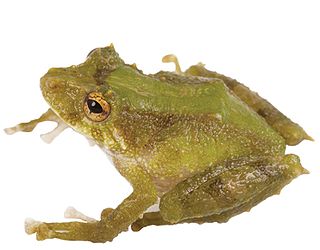 W
WPristimantis inusitatus is a species of frog in the family Craugastoridae. It is endemic to Ecuador and known from scattered localities along the eastern slopes of the Andes. Common name barking robber frog has been coined for it.
 W
WPristimantis luteolateralis is a species of frog in the family Craugastoridae. It is endemic to Ecuador. Its natural habitats are tropical moist montane forests, pastureland, plantations, rural gardens, and heavily degraded former forest.
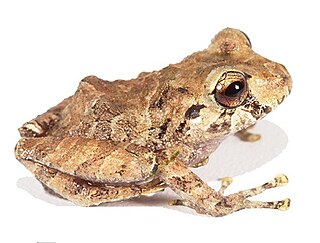 W
WPristimantis mallii is a species of frog in the family Craugastoridae. It is endemic to Ecuador. Described in 2019, it is only known from the Río Zuñag Reserve on the eastern slope of the Andes, in the upper basin of the Pastaza River. The specific name mallii honors V. N. Mallikarjuna "Malli" Rao, winner of Lavoisier Medal who helped develop an environmentally safe alternative to the fluorocarbons and whose donation helped establish the Río Zuñag Reserve. Common name Malli's rain frog has been coined for this species.
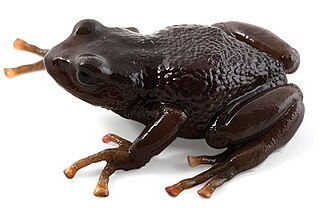 W
WPristimantis orcesi is a species of frog in the family Craugastoridae. It is endemic to Ecuador. Its natural habitat is tropical high-altitude grassland. It is threatened by habitat loss.
 W
WPristimantis ornatissimus is a species of frog in the family Craugastoridae. It is endemic to Ecuador. Its natural habitats are tropical moist lowland forests and moist montane forests, at altitudes of 400–1800 meters. It is threatened by habitat loss.
 W
WPristimantis pycnodermis is a species of frog in the family Craugastoridae. It is endemic to the Ecuadorean Andes and occurs in the Cordillera de Matanga in the Azuay and Morona-Santiago Provinces. The specific name pycnodermis is Greek and means "thick skin", a characteristic of this species. Common name thickskin robber frog has been coined for it.
 W
WRhaebo caeruleostictus is a species of toad in the family Bufonidae. It is endemic to Ecuador and occurs along the lower western slope of the Cordillera Occidental at elevations of 40–2,000 m (130–6,560 ft) asl. The specific name caeruleostictus, from Latin caeruleus (=blue) and Greek stiktos (spotted), refers to the bluish colour pattern of this species. Accordingly, common name blue-spotted toad has been coined for it.
 W
WRiama balneator is a species of lizard in the family Gymnophthalmidae. It is endemic to Ecuador.
 W
WRiama unicolor, the drab lightbulb lizard, is a species of lizard in the family Gymnophthalmidae. It is endemic to Ecuador.
 W
WSynophis bogerti, known commonly as Bogert's fishing snake or Bogert's shadow snake, is a species of snake in the family Colubridae. The species is endemic to northwestern South America.
 W
WSynophis calamitus is a species of snake in the family Colubridae. The species is endemic to northwestern South America.
 W
WThe western round-eared bat is a bat species found only on the Pacific coast of northwestern Ecuador.
 W
WXylophanes huloti is a moth of the family Sphingidae. It is known from Ecuador.
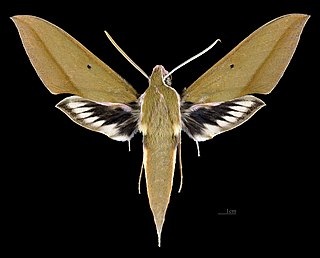 W
WXylophanes schwartzi is a moth of the family Sphingidae. It is known from Ecuador.
 W
WXylophanes vagliai is a moth of the family Sphingidae. It is known from Ecuador.